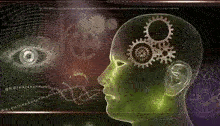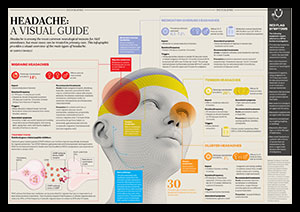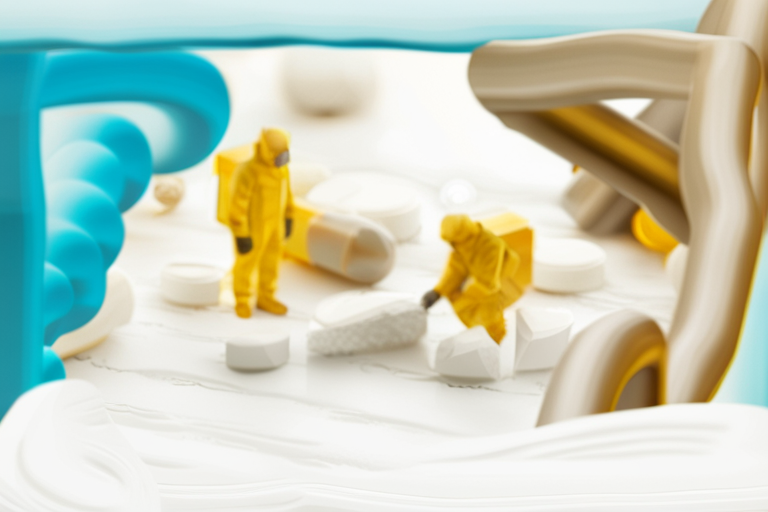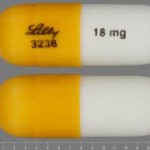Last Updated on June 13, 2023
Scientists in China have synthesised a small molecule blocker of the interaction between serotonin and the NO synthase transporter. In experiments on mice, they showed that disrupting this interaction in the neurons of the dorsal nucleus of the thalamus stimulated serotonin release in the medial prefrontal cortex and produced an antidepressant effect after just two hours.
Major depressive disorder is one of the most common mental illnesses, affecting hundreds of millions of people. Antidepressants are prescribed for this condition, but they have significant drawbacks – withdrawal syndrome, delayed onset of action, increased risk of suicide or schizophrenia. Researchers from Nanjing Medical University (China) propose a new solution. Their results are published in Science.
They found a way to treat depression in the middle of the last century, and since then they have mastered the game of nerve endings with neurotransmitters. They have learnt to combat a range of side effects, become more selective in altering the concentration of serotonin, dopamine and norepinephrine in the synapses, gained new side effects and continued the eternal dialectical struggle between opposites. One thing that has remained more or less constant in the 70 years since the discovery of antidepressants is the large therapeutic gap between the start of treatment and the onset of real antidepressant effects.
The average interval for the vast majority of antidepressants is about two weeks. Sometimes less, sometimes more. The same goes for tranquillisers: if you give them, you get the effect in half an hour. And if you inject it, you get an immediate effect. Antidepressants, on the other hand, are not expected to work immediately.
What is ZZL-7?
ZZL-7 is a fast-acting antidepressant. ZZL-7 acts by disrupting the interaction between the serotonin transporter (SERT) and neuronal nitric oxide synthase (nNOS) in the dorsal raphe nucleus (DRN). ZZL-7 easily crosses the blood-brain barrier. Enhances 5-HT (serotonin) signaling in forebrain circuits. ZZL-7 disrupts the interaction between the 5-HT transporter (SERT) and neuronal nitric oxide synthase (nNOS) in the dorsal raphe nucleus (DRN), which decreases the extracellular 5-HT concentration and reduces the 5-HT1A receptor autoactivity in the DRN. This reduction in autoinhibition increases the firing rate of serotonergic neurons in the DRN and increases 5-HT release in the medial hippocampus. ZZL-7 can be used to study major depressive disorder (MDD).
Mechanism of action of ZZL-7?
It does essentially the same thing as those antidepressants whose mechanism of action is based on playing with serotonin – it causes serotonin in the prefrontal cortex to increase, to become more. The trick is how it does it.
Well-known SSRIs prevent the nerve endings from removing serotonin too quickly from the synapses, the places where they meet. That’s where the concentration gradually builds up. Or at least it doesn’t fall too drastically.
But ZZL-7 works differently: it helps to shake up the neurons in the dorsal nucleus of the brain stem that produce serotonin. In other words, it increases its production. It dissociates the action of two substances – the serotonin transporter SERT and neuronal nitric oxide synthase (nNOS). In fact, it is the complex of these two substances that is responsible for the lack of serotonin in depression. And when their interaction is disrupted, the cells in the dorsal nucleus stop being lazy and start producing a lot of serotonin. And fast: in experiments, the clinical effect was achieved in just two hours.
Compare that – two weeks and two hours.
The point of the study
Most current antidepressants target the serotonin transporter SERT (aka 5-HTT) — a membrane protein that reverses the capture of the neurotransmitter serotonin, that is, transfers it from the synaptic cleft back into the presynaptic neuron. Selective serotonin reuptake inhibitors include fluoxetine, clomipramine, and other popular drugs. The authors of the new work found another promising way to affect SERT. In experiments on mice, they found that depression is inhibited by dissociation of the serotonin transporter from NO synthase in neurons of the dorsal nucleus schwa. They developed a small molecule that works on this target, and could lead to a new class of fast-acting antidepressants.
Structures of the brain stem that are called suture nuclei, — Some of the major sources of serotonin in the brain, both in humans and in the mouse. The authors focused on the processes in the dorsal nucleus of the suture. The activation of serotonin receptors in this structure has the opposite effect compared to the cortex or the hippocampus — does not excite, but suppresses signals from serotonergic neurons and reduces serotonin release in other brain structures, causing a shortage of this neurotransmitter. In depression, serotonin receptors in the dorsal nucleus of the suture are hyperactive.
Herein lies one of the problems of treating depression — Serotonin reuptake inhibitors also activate serotonin receptors in the stitch nuclei; this upsets the balance of serotonin metabolism, and a response does not develop until several weeks later, when receptors in the dorsal nucleus lose sensitivity.
But blockers of SERT and neuronal synthase (nNOS) interaction can provide a rapid antidepressant effect. The formation of the nNOS-SERT complex in neurons in the dorsal nucleus of the suture prevents translocation of the SERT transporter to the membrane, which leads to the accumulation of extracellular serotonin. The authors of the study developed a small molecule, SNIB ZZL-7, that interferes with the interaction of SERT with nNOS, and verified its antidepressant effect.
To examine the role of the SERT-nNOS complex in the development of depression, scientists subjected mice to chronic uncontrolled stress for four weeks. The experimental animals exhibited depressive behavior and had increased SERT-nNOS complex content in dorsal nucleus suture neurons. In mice with neuronal NO synthase gene knockout nNos, Conversely, in chronic stress, antidepressant behavior was observed in behavioral tests, and the amount of SERT embedded in the neuronal membrane increased.
In addition, the scientists found some molecules in a group of short peptide-based compounds they had previously obtained called Sakura that could interact with NO synthase and facilitate the association of nNOS and SERT. Animals microinjected with these substances into the dorsal nucleus of the suture exhibited depressive behavior, increased levels of the SERT-nNOS complex, and decreased membrane SERT transporter. The same effects were observed in animals with recombinant NO synthase, which cannot synthesize NO but forms stronger complexes with the transporter. Researchers suggested that emotional stress may contribute to the association of SERT-nNOS, thereby leading to depression.
Optogenetic methods have found that disruption of the SERT-nNOS complex and translocation of SERT to the membrane increases neuronal activity and promotes serotonin release in the medial prefrontal cortex, and thus the development of rapid antidepressant effects.
Finally, after studying the chemical mechanisms of SERT and nNOS binding, scientists synthesized a low-molecular-weight compound, ZZL-7, which reduced depression in experimental animals as early as two hours after intravenous injection, Additional tests showed that the compound had no effect on memory, cognitive ability or aggression, and did not cause abnormal brain activity.
Results of experiments in mice
ZZL-7 (10 mg/kg, intraperitoneally) causes a significant increase in serotonergic neuronal firing rate 2 hours after in vivo electrophysiology treatment in SERT-Cre mice. In wild-type mice, ZZL-7 decreases immobility time.
Intragastric administration of ZZL-7 (10, 20, and 40 mg/kg; once) induced antidepressant-like behavior in a dose-dependent manner 2 hours after treatment.
ZZL-7 (10 mg/kg; intraperitoneal administration) reverses chronic unpredictable mild stress (CMS)-induced depressive behavior 2 hours after treatment.
Conclusion
The list of researchers studying fast-acting antidepressants is growing, notes Fierce Biotech. In August, Axsome Therapeutics’ NMDA receptor antagonist Auvelity received FDA approval for use in major depressive disorder. Depressive symptoms became milder in one week, with complete remission achieved in the second week. Johnson’s Spravato nasal spray & Johnson, aka esketamine — Ketamine derivative — Was approved by the FDA in 2019 for rapid treatment of episodes of severe depression or suicidal ideation.
If the new drug passes clinical trials, and if the trials are successful, the magic box will be filled with a fast-acting Chinese antidepressant in a few years’ time. Even if you manage to get your hands on the drug before it hits the shelves, self-medication is not recommended.


























